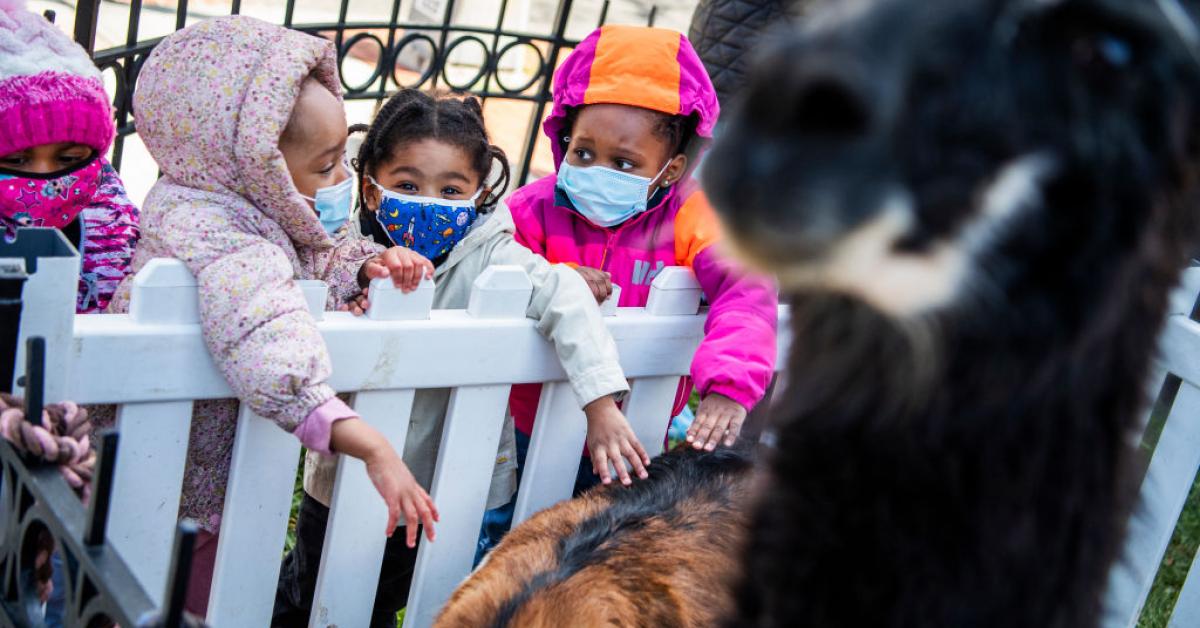() The range of acceptable opinion on COVID-19 mitigation efforts may be widening, with peer-reviewed medical journals recently publishing research finding that masks likely harm schoolchildren and questioning whether benefits from COVID-19 vaccines outweigh risks.
by
Measured carbon dioxide content in “inhaled air,” observed in a study of masked German schoolchildren, was at least three-fold higher than German law allows, according to a research letter published this week in the Journal of the American Medical Association (JAMA) Pediatrics.
Last week, the journal Vaccines, affiliated with the American Society for Virology, published research that estimates every three COVID-19 deaths prevented by vaccination are offset by two deaths “inflicted by vaccination,” using Israeli and European data.
The papers share a lead author, Harald Walach, a professor in Poznan University of the Medical Sciences’ Pediatric Clinic in Poland and University of Witten/Herdecke’s psychology department in Germany.
“Most of the complaints reported by children” in a Germany-wide register on mask-wearing, including irritability, headache and reluctance to go to school, “can be understood as consequences of elevated carbon dioxide levels in inhaled air,” the JAMA Pediatrics paper said. It cited the “dead-space volume of the masks, which collects exhaled carbon dioxide quickly after a short time.”
In light of “impairments attributable to hypercapnia,” or the bloodstream buildup of CO2, policymakers should reconsider requiring children to wear masks, it said.
The study passed muster at the University of Witten/Herdecke’s ethics board, given that it required each child to wear various masks for a total of 15 minutes, in contrast to the “several hours” they spend masked in school, the trial protocol said.
The first 3-minute measurement gauged “baseline” unmasked CO2 levels. The next 3-minute intervals were for CO2 content in “joint inhaled and exhaled air,” inhaled air only and exhaled air only.
Two thousand parts per million of CO2, or 0.2%, is the limit for closed rooms under German law, the study said. The child with the lowest CO2 level was three times higher than this limit, while one 7-year-old was measured with 25,000 parts per million.
‘[D]oes sharing this make me an anti-masker?’
Medical experts quickly debated the JAMA Pediatrics paper and a related question: the paucity of research on whether masks have benefitted schoolchildren since schools started requiring them for in-person learning.
“[D]oes sharing this make me an anti-masker?” Johns Hopkins University epidemiologist Stefan Baral asked Tracy Hoeg, another epidemiologist who co-wrote a January paper on the low risk of COVID spread in schools with masked children.
While she’s a critic of masking schoolchildren, Hoeg responded that the study didn’t provide “the implications of these CO2 levels” or include an “unmasked baseline group by age,” and questioned why JAMA Pediatrics published it.
The better question is why studies used to promote masking don’t have a control group, and why the effects of “all-day mask wearing” remain unstudied, countered Jennifer Cabrera. She helped coordinate a group of Florida parents to get their children’s school-required masks tested at a University of Florida lab, which found multiple strains of dangerous bacteria on them.
“US CDC recommends masking from 2 years to 5 years — they need to do a trial to prove it. I bet it will fail,” Prasad wrote.
I agree with that, but 1 year later and no one has shown that asking kids to wear masks works!
US CDC recommends masking from 2 years to 5 years– they need to do a trial to prove it. I bet it will fail— Vinay Prasad MD MPH (@VPrasadMDMPH) July 1, 2021
The paper in Vaccines calculated the “number needed to vaccinate” (NNTV) to prevent one COVID-19 death, using a million-person Israeli field study and “the most prominent trial data from regulatory phase 3 trials.”
Because European side-effect reports vary widely due to different national reporting standards, the researchers used the Dutch national register of “individual case safety reports” — the highest in Europe — to gauge the number of severe and fatal side effects per 100,000 vaccinations.
They gauged that 16 cases per 100,000 vaccinations will develop “severe adverse reactions” and four people will die, which “tallies well” with the 3.4 deaths per 100,000 found in a recent analysis of the U.S. adverse reactions reporting system.
“Simply put: As we prevent three deaths by vaccinating, we incur two deaths,” according to the paper, though looking at phase 3 trial data alone, the “optimum case” is four deaths caused and 33 lives saved by vaccines.
“However, one should consider the simple legal fact that a death associated with a vaccination is different in kind and legal status from a death suffered as a consequence of an incidental infection,” the paper said.
It didn’t take long for Vaccines to have doubts about publishing Walach’s paper, however. The journal posted an “expression of concern” four days later, specifically questioning the claimed ratio of lives saved to deaths caused.
“Serious concerns have been raised about misinterpretation of the data and the conclusions,” it reads, citing the paper’s “misrepresentation of the COVID-19 vaccination efforts and misrepresentation of the data.” The journal has notified the authors and “will provide an update following the conclusion of our investigation.”
Brown University epidemiologist Andrew Bostom mocked the journal’s about-face. He asked rhetorically whether a similar investigation would commence into “deaths unrelated to ‘severe acute respiratory syndrome'” that were attributed to COVID-19.
Stillness in the Storm Editor: Why did we post this?
The news is important to all people because it is where we come to know new things about the world, which leads to the development of more life goals that lead to life wisdom. The news also serves as a social connection tool, as we tend to relate to those who know about and believe the things we do. With the power of an open truth-seeking mind in hand, the individual can grow wise and the collective can prosper.
– Justin
Not sure how to make sense of this? Want to learn how to discern like a pro? Read this essential guide to discernment, analysis of claims, and understanding the truth in a world of deception: 4 Key Steps of Discernment – Advanced Truth-Seeking Tools.
Stillness in the Storm Editor’s note: Did you find a spelling error or grammatical mistake? Send an email to [email protected], with the error and suggested correction, along with the headline and url. Do you think this article needs an update? Or do you just have some feedback? Send us an email at [email protected]. Thank you for reading.
Source:
Support our work! (Avoid Big Tech PayPal and Patreon)DIRECT DONATION


Leave a Reply